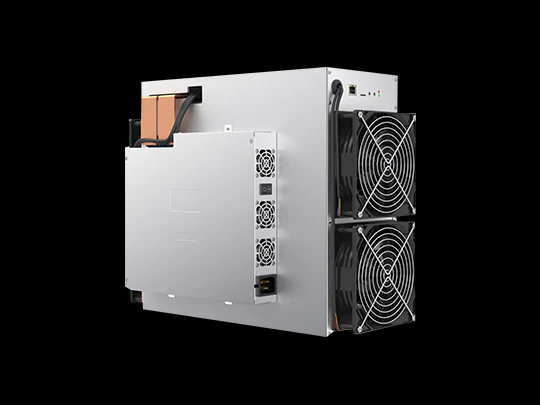How to Overclock Ipollo V1 ETH Miner for Better Performance?
The Ipollo V1 3600Mh/s ETH & ETC Miner is a powerhouse in the world of cryptocurrency mining, specifically optimized for Ethereum (ETH) and Ethereum Classic (ETC) operations. With its impressive 3600 MH/s hashrate, this professional-grade mining system is designed to deliver exceptional performance while maintaining operational efficiency. However, for seasoned miners looking to squeeze every last drop of potential from their hardware, overclocking the Ipollo V1 can unlock even greater performance. In this article, we’ll explore how to safely and effectively overclock the Ipollo V1, ensuring you maximize your mining output without compromising the longevity of your equipment.
Understanding the Ipollo V1: A Mining Powerhouse
Before diving into overclocking, it’s essential to understand the core features and capabilities of the Ipollo V1. This miner is engineered with advanced 6GB memory architecture, specifically tailored to handle the memory-intensive EtHash algorithm. Its compact design (314 x 194 x 290mm) makes it suitable for both industrial-scale operations and professional mining facilities, while its robust thermal management system ensures consistent performance.

The Ipollo V1 operates at a power consumption of 3100W, striking a balance between efficiency and performance. Its quad-fan cooling system maintains optimal operating temperatures (5-25°C) and keeps noise levels at a manageable 70dB. These features make the Ipollo V1 a reliable choice for miners focused on ETH and ETC ecosystems.
What is Overclocking, and Why Should You Consider It?
Overclocking refers to the process of increasing a device’s clock rate beyond its factory settings to achieve higher performance. In the context of mining, overclocking can boost a miner’s hashrate, allowing it to solve more cryptographic puzzles and earn more rewards in less time. However, overclocking also increases power consumption and heat generation, which can strain the hardware if not managed properly.
For the Ipollo V1, overclocking can push its already impressive 3600 MH/s hashrate even further, potentially increasing profitability. However, it’s crucial to approach overclocking with caution, as improper settings can lead to hardware damage or reduced lifespan.
Preparing to Overclock the Ipollo V1
1. Ensure Proper Cooling
The Ipollo V1’s quad-fan cooling system is designed to handle its default operating conditions. However, overclocking will generate additional heat, so it’s essential to ensure your mining environment has adequate ventilation. Consider placing the miner in a well-ventilated area or using external cooling solutions to maintain optimal temperatures.
2. Monitor Power Supply
Overclocking increases power consumption, so verify that your power supply can handle the additional load. Using a high-quality PSU (Power Supply Unit) with sufficient wattage is critical to avoid power-related issues.

3. Use Reliable Software
To overclock the Ipollo V1, you’ll need access to its control interface. Most miners use software like Ipollo’s official management tools or third-party applications compatible with ASIC miners. Ensure the software is up-to-date and supports overclocking features.
4. Backup Default Settings
Before making any changes, record the miner’s default settings, including clock speed, voltage, and fan speed. This allows you to revert to the original configuration if needed.

Step-by-Step Guide to Overclocking the Ipollo V1
Step 1: Access the Miner’s Interface
Connect your Ipollo V1 to your computer via Ethernet and access its web interface. Enter the miner’s IP address in your browser to log in.
Step 2: Locate Overclocking Settings
Navigate to the “Settings” or “Advanced” section of the interface, where you’ll find options for adjusting clock speed, voltage, and fan speed.
Step 3: Increase Clock Speed Gradually
Start by increasing the clock speed in small increments (e.g., 50 MHz at a time). After each adjustment, monitor the miner’s performance and stability. Use benchmarking tools to measure the hashrate and ensure the miner is functioning correctly.
Step 4: Adjust Voltage (if necessary)
Increasing clock speed may require a slight voltage boost to maintain stability. Be cautious when adjusting voltage, as excessive increases can lead to overheating or hardware damage. Only make small adjustments and monitor the miner’s temperature closely.
Step 5: Optimize Fan Speed
As overclocking generates more heat, you may need to increase fan speed to maintain safe operating temperatures. Ensure the miner’s temperature stays within the recommended range (5-25°C).
Step 6: Test Stability
After applying overclocking settings, run the miner for several hours to test its stability. Monitor for any signs of overheating, crashes, or reduced performance. If issues arise, revert to the previous settings and try a more conservative approach.
Practical Tips for Safe Overclocking
- Start Small: Avoid making large adjustments all at once. Gradual changes allow you to identify the optimal settings without risking hardware damage.
- Monitor Temperatures: Use the miner’s interface or third-party tools to track temperature levels. If the miner exceeds safe operating temperatures, reduce clock speed or increase fan speed.
- Balance Performance and Efficiency: While overclocking can boost hashrate, it also increases power consumption. Find a balance that maximizes profitability without significantly raising operational costs.
- Keep Firmware Updated: Regularly update the miner’s firmware to ensure compatibility with the latest overclocking tools and features.
- Document Your Settings: Record your overclocking configurations for future reference. This makes it easier to replicate successful setups or troubleshoot issues.
Real-World Benefits of Overclocking the Ipollo V1
By overclocking the Ipollo V1, miners can achieve significant performance improvements. For example, a 10% increase in hashrate could translate to higher daily earnings, especially in competitive mining environments. Additionally, overclocking allows miners to adapt to changing network difficulties and maximize profitability during favorable market conditions.
However, it’s important to weigh these benefits against the potential risks. Overclocking can shorten the lifespan of your hardware if not done carefully, so always prioritize safety and stability.

Conclusion: Unlocking the Full Potential of the Ipollo V1
The Ipollo V1 3600Mh/s ETH & ETC Miner is already a top-tier mining solution, but overclocking can take its performance to the next level. By following the steps outlined in this guide, you can safely and effectively overclock your Ipollo V1, boosting its hashrate and increasing your mining rewards. Remember to approach overclocking with caution, monitor your miner’s performance closely, and prioritize long-term hardware health.
Whether you’re running a large-scale mining operation or managing a professional facility, the Ipollo V1’s combination of power, efficiency, and versatility makes it an excellent choice for ETH and ETC mining. With proper overclocking techniques, you can maximize its potential and stay ahead in the competitive world of cryptocurrency mining.